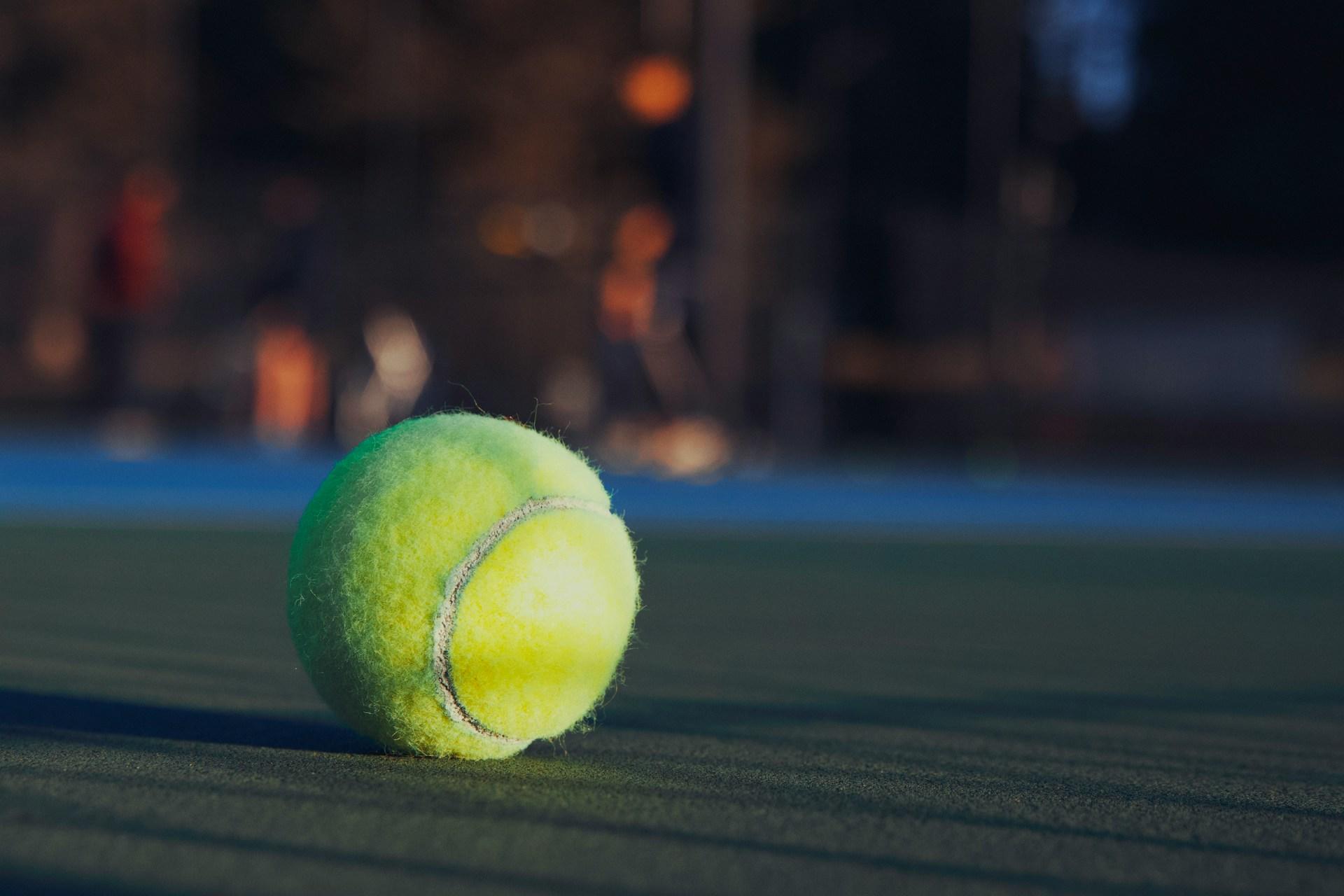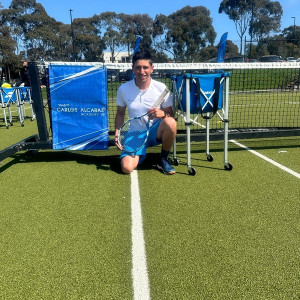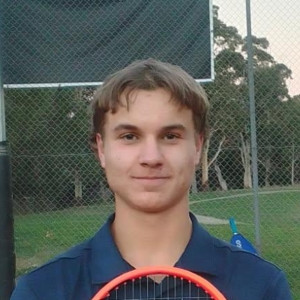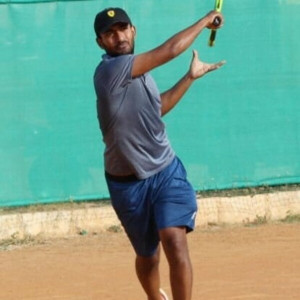Today, the Australian Open is one of the four Grand Slam tennis tournaments. It takes place in January and starts the tennis calendar every year.
From a small regional event to the internationally renowned tennis tournament in Melbourne Park, the Australian Open is the cornerstone of the tennis calendar.
Here, we'll look at its long and storied history, the key milestones, major events, and notable players who've shaped this prestigious tournament's history.

Timeline of the Australian Open
1905
The first Australasian Championships held in Melbourne.
1922
Women’s singles introduced for the first time.
1927
Renamed the Australian Championships.
1969
First “Open” era tournament allowing both amateurs and professionals.
1972
Permanent move to the Kooyong Lawn Tennis Club.
1988
Relocated to Melbourne Park with a new hard court surface.
2000
Centre court renamed to Rod Laver Arena.
2008
Introduction of blue Plexicushion courts.
2021
First Grand Slam to use electronic line judging exclusively.
1905-1920s: The Early Years of the Australian Open
The Australian Open started as the Australasian Championships in January 1905. It was held at the Warhouseman's Cricket Ground in Melbourne and was initially planned to promote tennis in Australia and New Zealand.
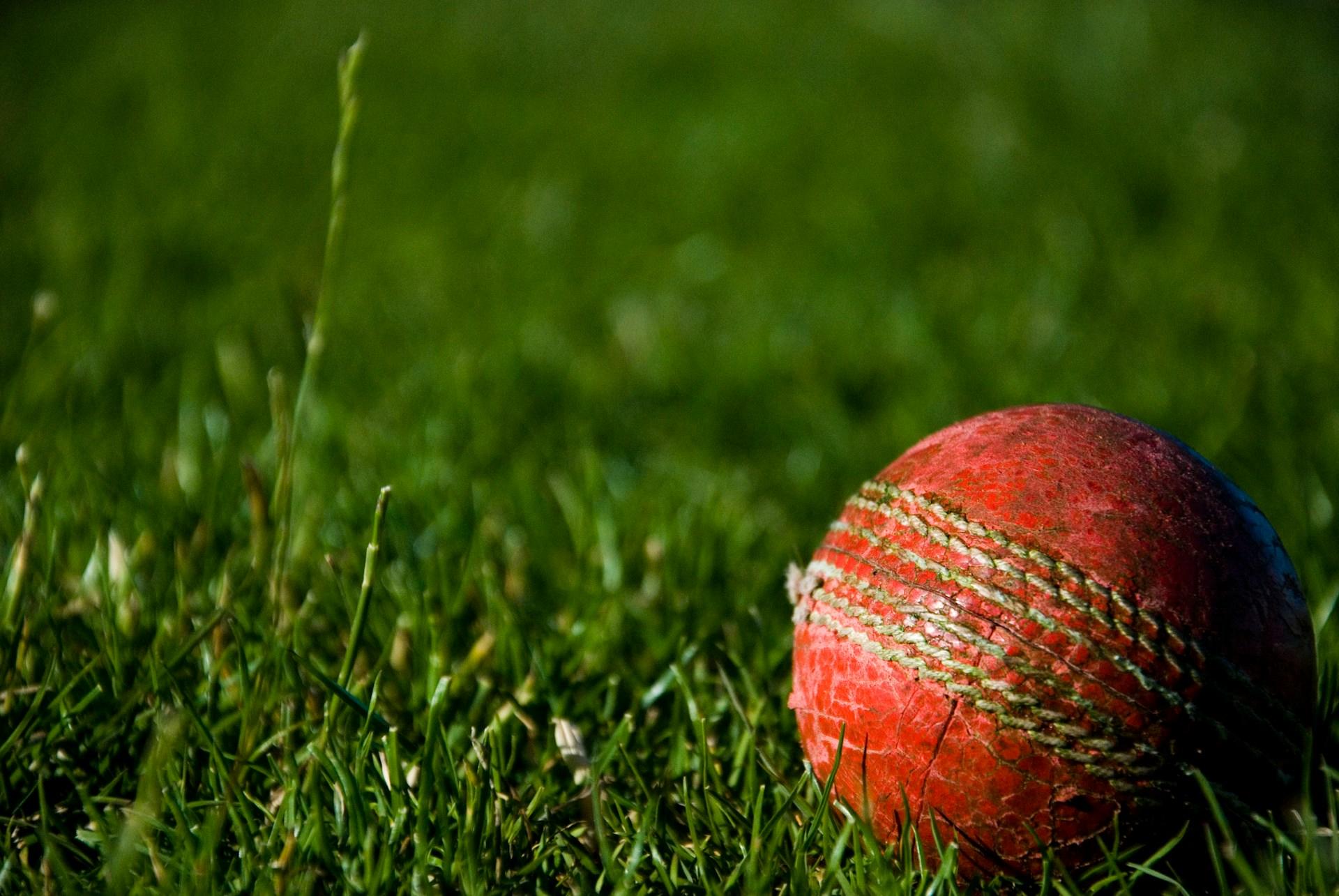
The matches were played on grass courts at the time, and one interesting fact about the Australian Open is that the event rotated among various cities in Australia and New Zealand, including Sydney, Brisbane, Adelaide, Perth, and Christchurch. However, the rotation made it difficult for international players to attend due to the long and costly travel.
Key Milestones
1905
First men’s singles champion, Rodney Heath.
1922
The introduction of the women’s singles and doubles competitions marked a significant step toward inclusivity.
1927
The tournament was renamed the Australian Championships to reflect its growing importance.
1930s-1940s: Growth and Challenges for the Australian Open
After the tournament had been established for a few decades, its profile began to rise. However, it still had the same logistical challenges that plagued it in its early years, with venue rotation causing problems for international players.
This did allow Australia to produce some dominant champions, though.
A three-time winner (1931, 1932, 1935).
Known for his doubles success and singles title in 1936.
Though an annual event, World War II led to its cancellation between 1941 and 1945. When the tournament resumed after the war, it attracted a greater number of international competitors and started becoming a truly international tennis tournament.
1950s-1969: The Dawn of the Open Era
After the Second World War, the Australian Championships started to gain international recognition, with players like Lew Hoad, Ken Rosewall, and Margaret Court becoming household names.
Key Developments
1950s
The tournament rotated among Sydney, Brisbane, and Adelaide before settling in Melbourne.
1962
Rod Laver won his first Grand Slam and completed the calendar-year sweep.
1969
The tournament became the Australian Open, allowing amateurs and professionals to compete. This marked the beginning of the Open Era.

1970s-1987: The Kooyong Years
In 1972, it was decided that the Australian Open would now be permanently hosted at the Kooyong Lawn Tennis Club in Melbourne. For those in the area who want to experience the sport firsthand, joining a tennis class melbourne can be a great opportunity.
These grass courts were synonymous with the tournament. Still, by the 1980s, it was fairly clear that there were several limitations because of the venue. Despite the tournament's success during this era, it still struggled to attract the top international players due to the hot weather, the grass surface, and the remote location.
Notable Champions
Dominant Australian champions during this era.
Martina Navratilova and Chris Evert
Bringing international flair to the women’s draw.
The Evolution of Playing Surfaces
Most Grand Slams and tennis tournaments are known by the surface they're played on, though this hasn't been consistent throughout the history of the Australian Open.
Despite now being one of the most famous tennis tournaments on a hard court, matches were played on grass courts throughout most of the tournament's history.
The events at Sydney, Adelaide, Brisbane, and the Kooyong Lawn Tennis Club in Melbourne were played on grass courts.
During the 1980s, it was clear that grass courts had several limitations, especially in Melbourne, Australia, where unpredictable weather meant the playing surface required intensive maintenance and that matches would be delayed or cancelled.
The switch to the hard court surface helped bring with it new playing styles and brought the tournament more in line with the US Open, the other Grand Slam tournament to use the surface. For players looking to further enhance their skills, working with a professional tennis coach can be a game-changer.
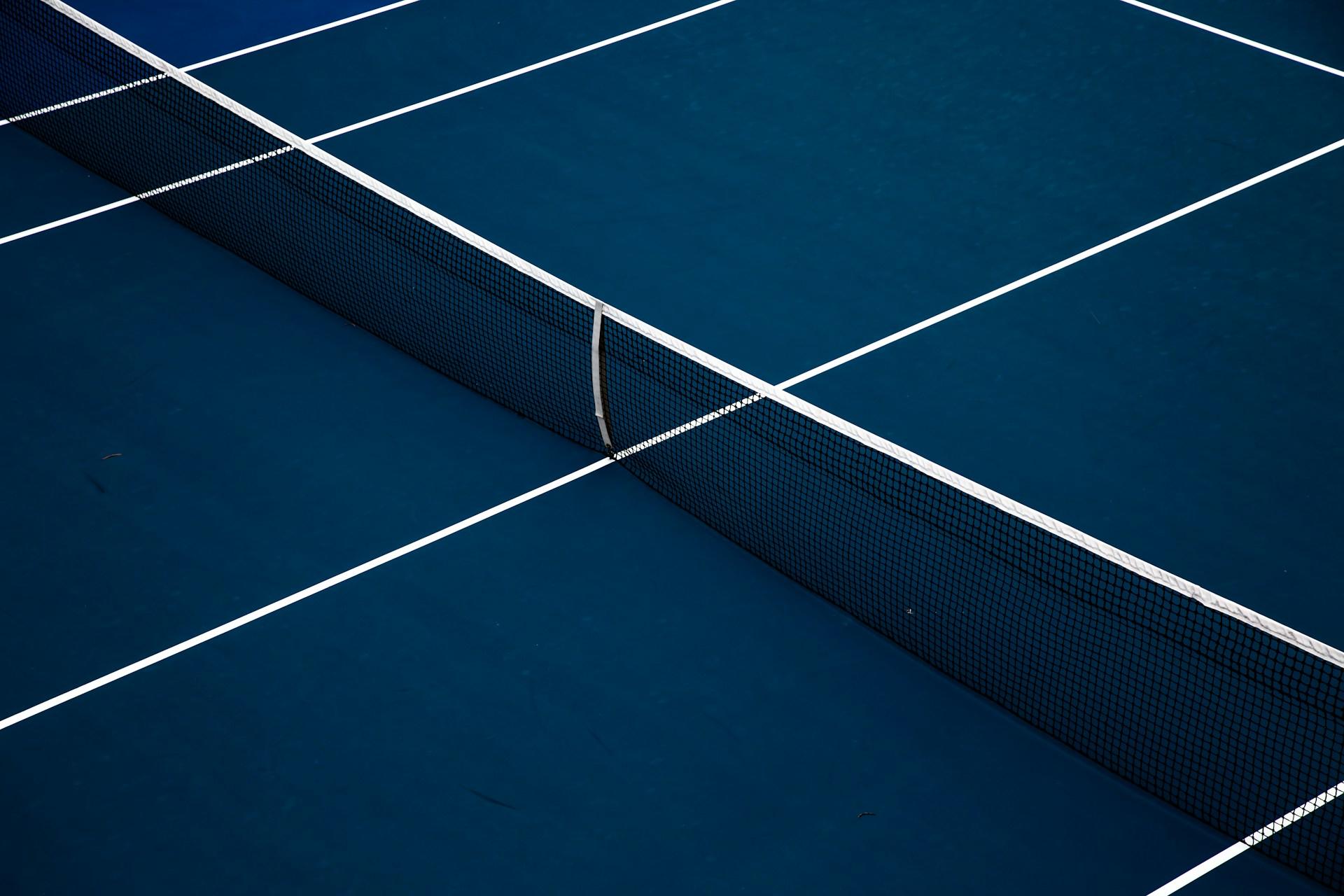
1988-1999: The Australian Open Moves to Melbourne Park
By the end of the 1980s, the Australian Open underwent its most transformative change: its relocation to the state-of-the-art Melbourne Park.
Formerly Flinders Park, this new venue introduced a hard court surface and a retractable roof over the main stadium, Rod Laver Arena (though this wasn't its name then).
In addition to modernising the tournament, it aligned it with the other Grand Slam events on the tennis calendar.
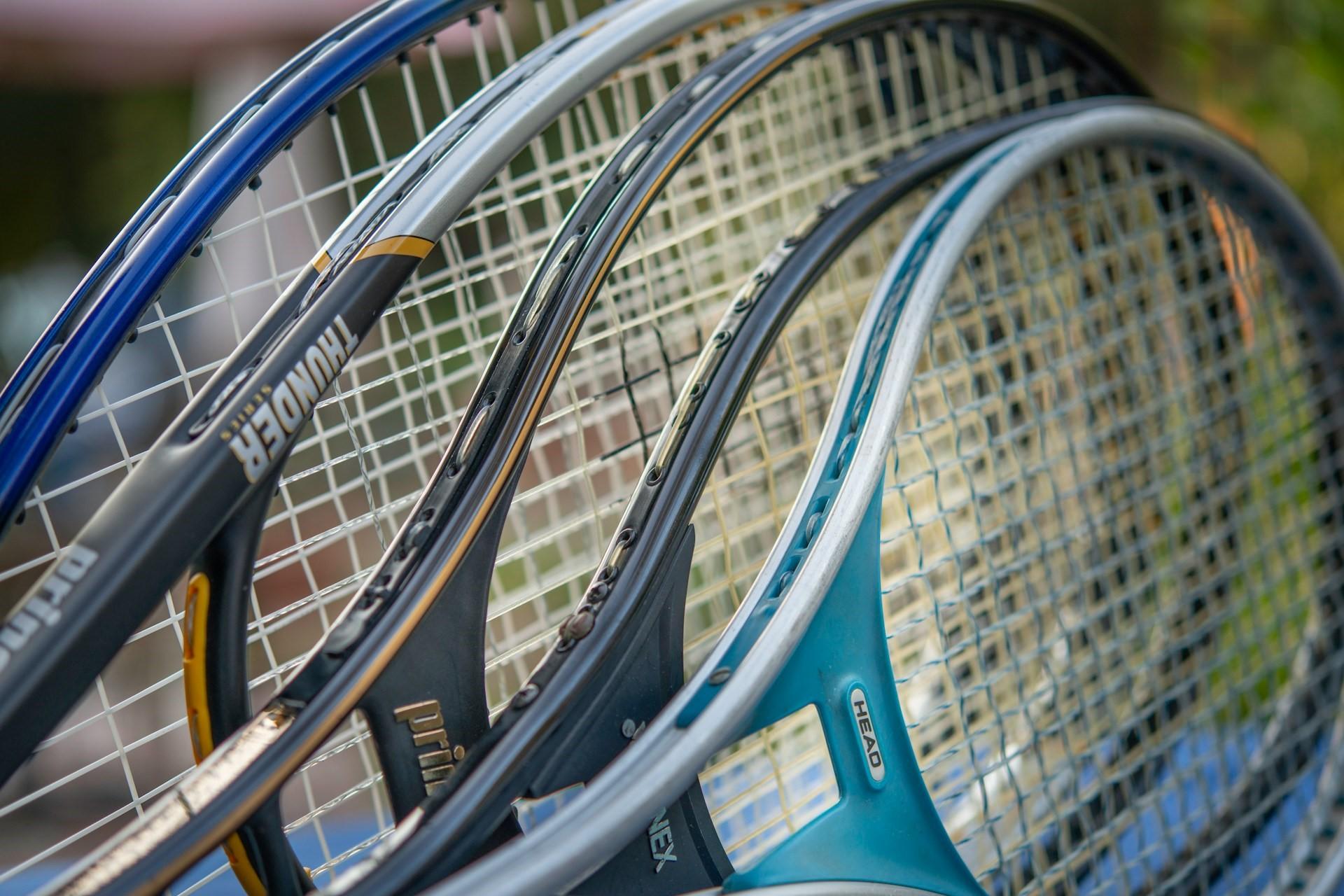
Key Moments
- 1988: The inaugural event at Melbourne Park drew a record 244,859 spectators.
- Stefan Edberg and Chris Evert were among the first champions at the new venue.
2000s-2010s: Modernisation and Global Growth
The 2000s came with regular improvements to Melbourne Park. The main court was renamed Rod Laver Arena after the legendary Australian player.
In 2008, the tournament introduced the blue Plexicushion courts that the tournament is famous for. For players looking to further enhance their skills, working with a professional tennis coach can be a game-changer.
Key Champions
Dominant during this decade, winning multiple titles.
Emerging as a dominant force, he claimed his first Australian Open title in 2008.
This era brought with it record-breaking attendance figures and global viewership.
2020s: Innovations and the Present Era
This decade started with technological advancements and several challenges, including the COVID-19 pandemic.
In 2020 and 2021, the tournament had limited attendance and quarantine measures for the players.
However, there were some interesting new innovations on the tennis side of things.
Key Innovations
2021: The introduction of electronic line judging eliminated the need for line judges, making the Australian Open the first Grand Slam to fully embrace this technology.
Recent Champions
continued his dominance, winning his 10th Australian Open title in 2023.
Captured the nation's hearts by winning the women's singles title in 2022.
Memorable Matches and Rivalries
The Australian Open has provided a stage for the finest tennis players and some thrilling and unforgettable matches. We can't go through them all here, but here are a few that have gone down in history.

1981: Martina Navratilova vs. Chris Evert
This rivalry played out when the Australian Open was still on the grass courts of Kooyong Lawn Tennis Club.
Martina Navratilova and Chris Evert faced off in the women's singles final, with the victory going to Navratilova at the end of a tense three-set match.
The two legends showcased their contrasting styles, with Evert's consistent baseline play facing off against Navratilova's aggressive net game.
The match would ultimately elevate the status of the Australian Open and women's tennis.
Watch the full match here.
2003: Serena Williams vs. Venus Williams
The 2003 women's final saw the Williams sisters battle for the title. In the end, Serena defeated Venus in three sets. She would complete her first "Serena Slam", holding all four Grand Slam titles simultaneously (though not necessarily during the same calendar year).
This historic moment for women's tennis showcased power, athleticism, and sibling rivalry, too!
Watch the Williams sisters full match here.
2009 and 2017: Rafael Nadal vs. Roger Federer
Two of the greatest to ever have played the sport. The matchups in the 2009 and 2017 men's singles finals were some of the greatest matches in tennis history, not just Australian Open history.
The 2009 matchup took 4 hours and 20 minutes, with Nadal leaving victorious. The 2017 matchup was a five-set thriller in which Federer won, claiming his 18th Grand Slam title after returning from a six-month injury.
Check out this amazing 26 shot rally between two of tennis' greatest ever players.
2012: Novak Djokovic vs. Rafael Nadal
The 2012 men's final between Novak Djokovic and Rafael Nadal lasted 5 hours and 53 minutes, the longest Grand Slam final ever. It was an epic battle of endurance, skill, and mental toughness.
The match was eventually won by Novak Djokovic, whose resilience and endurance are a key part of his play.
Watch the highlights from this amazing match here.
The Australian Open has regularly adapted and evolved far more than the other Grand Slam tournaments. The Melbourne Park venue is now a showcase of innovation and excellence.
The tournament has welcomed champions like Rod Laver, Margaret Court, Novak Djokovic, and Serena Williams, who've all left their marks on the event and tennis in the broader sense.
The Australian Open is not just a celebration of tennis but one of the country's finest sporting events.
Are you looking for tennis lessons? Superprof helps you get in touch with tennis coaches and instructors everywhere in Australia!

